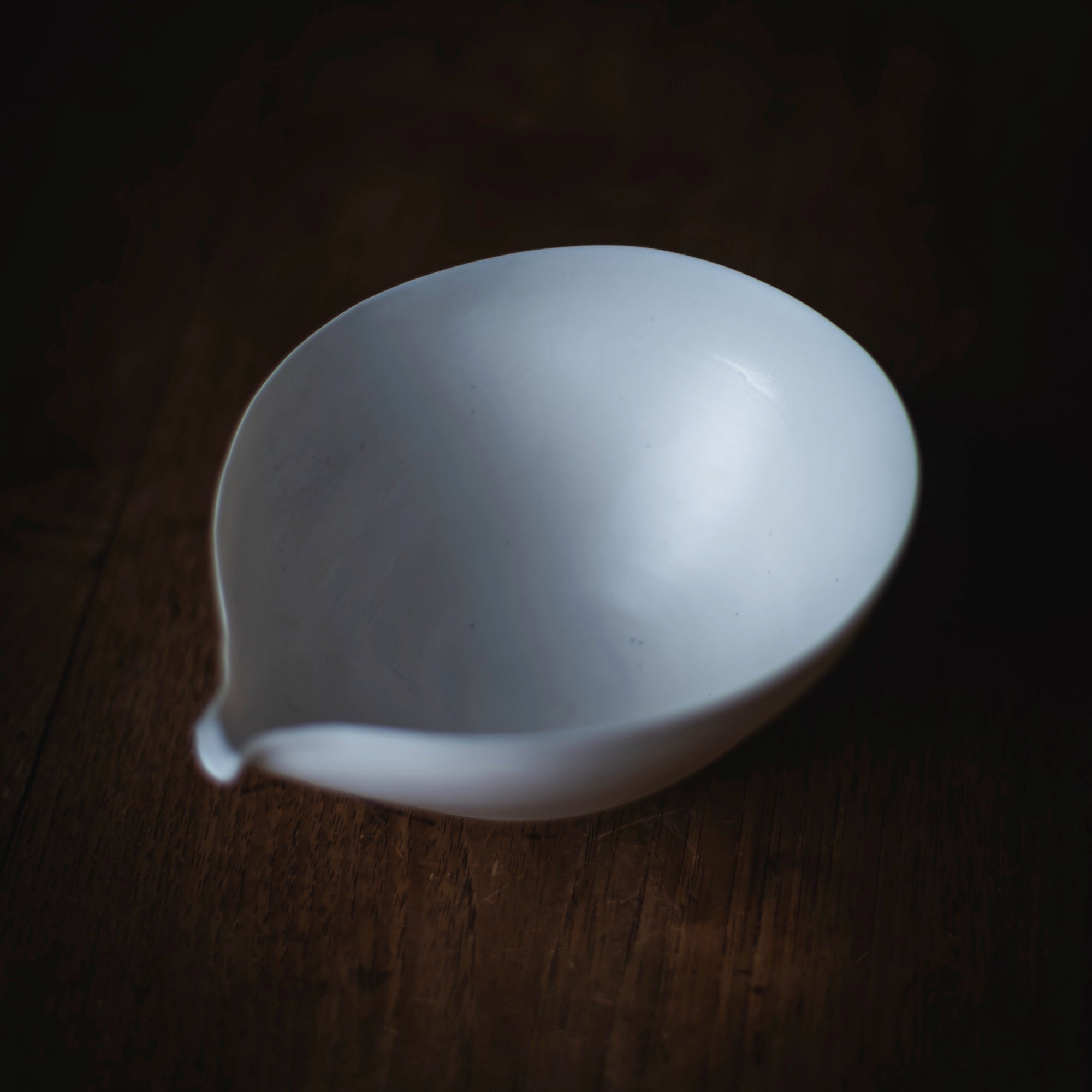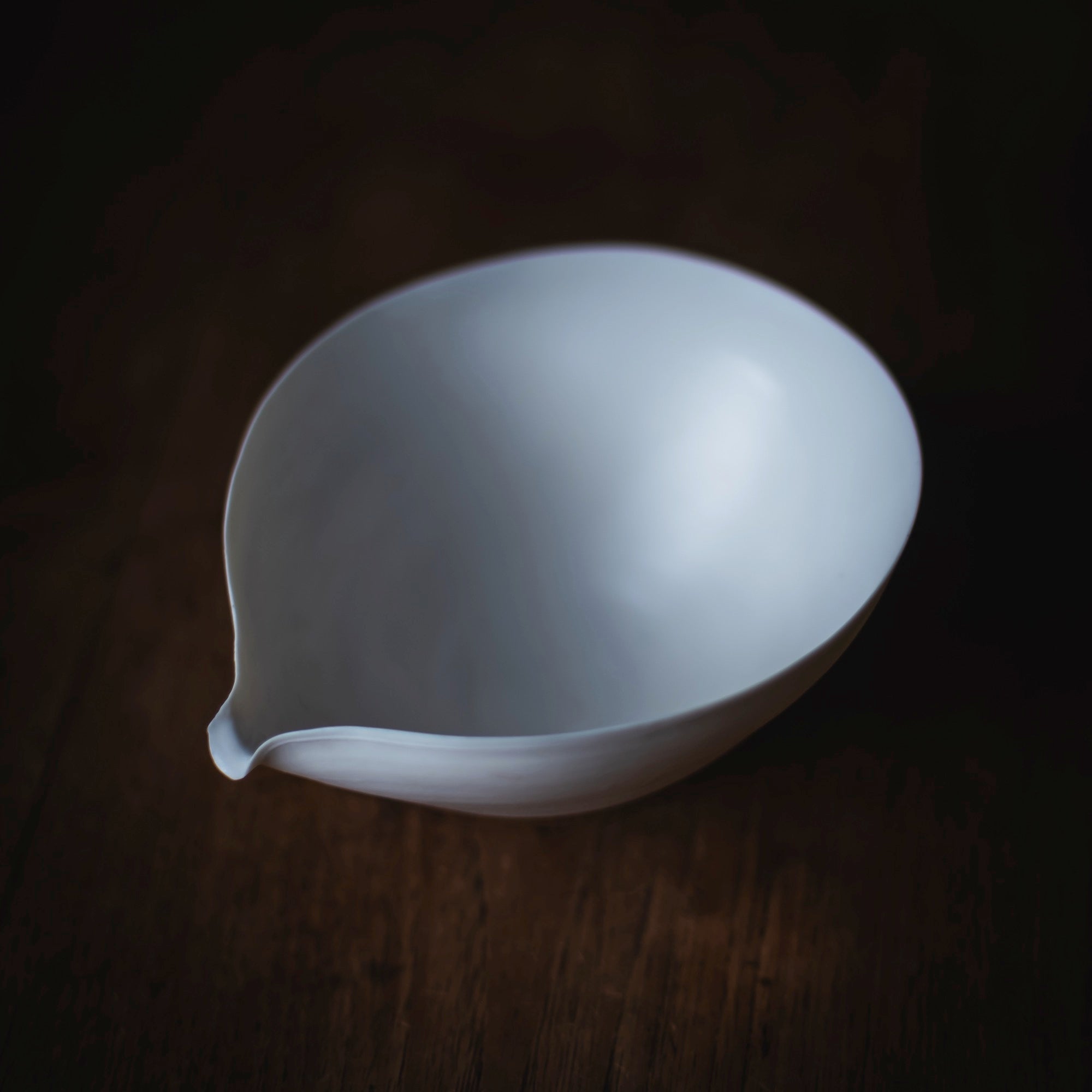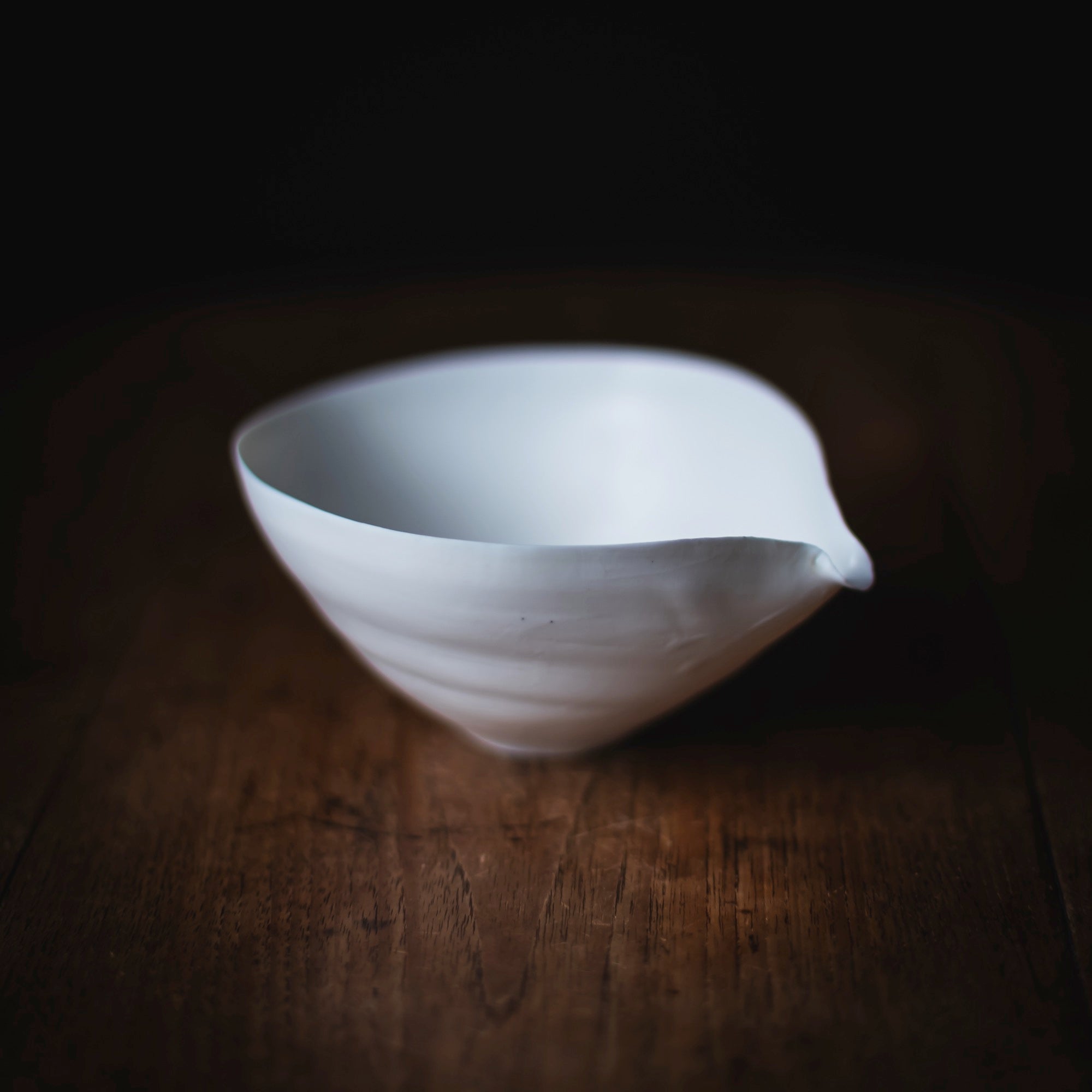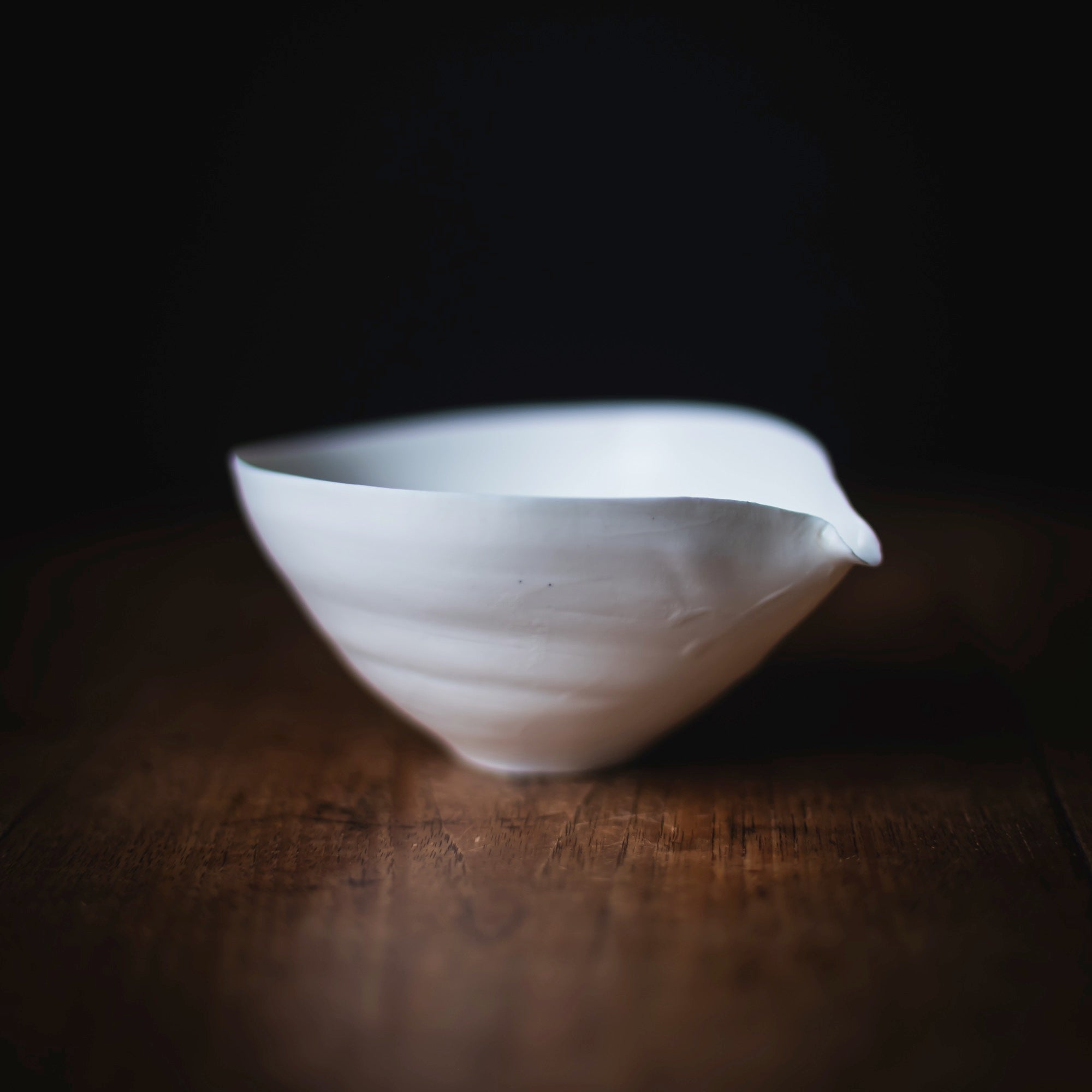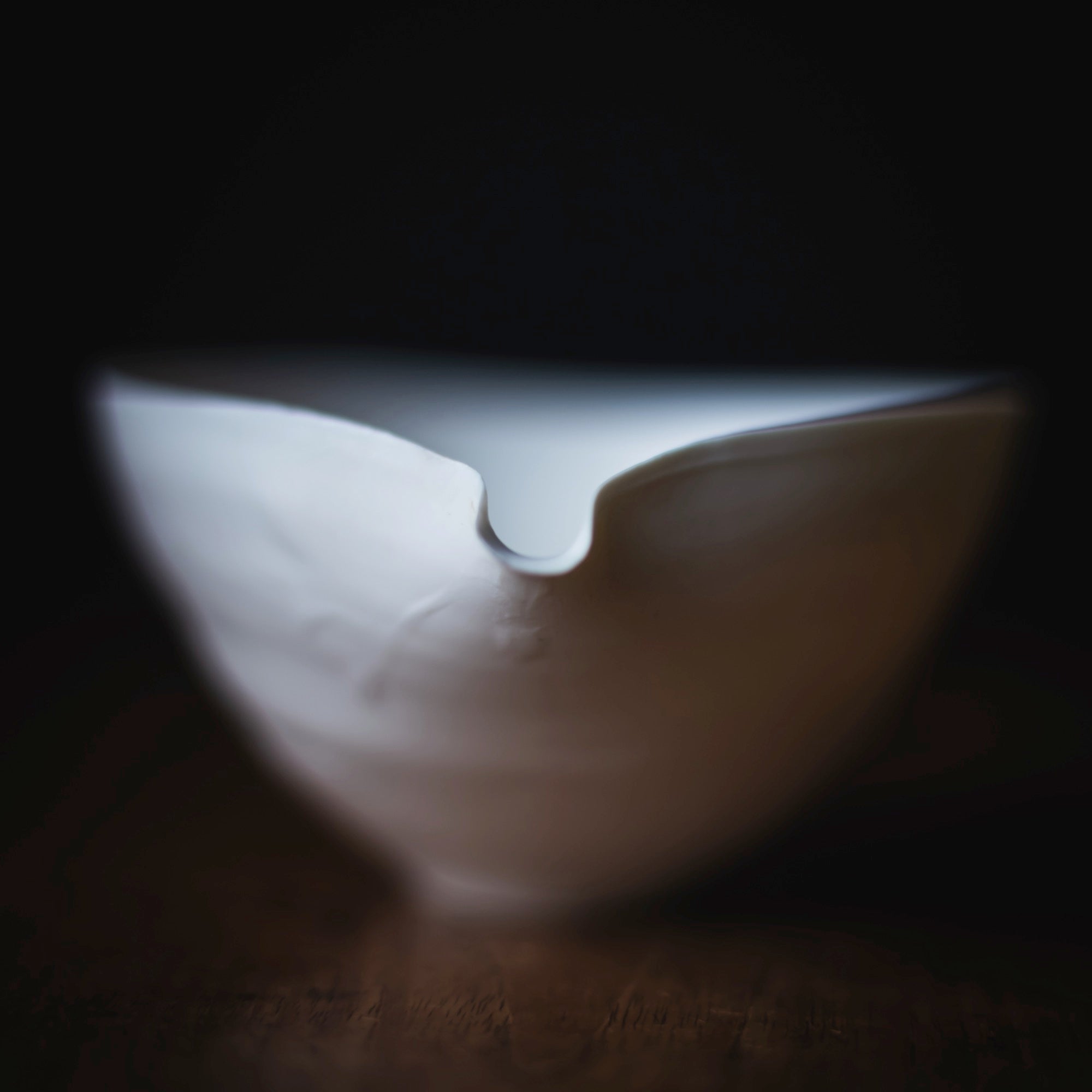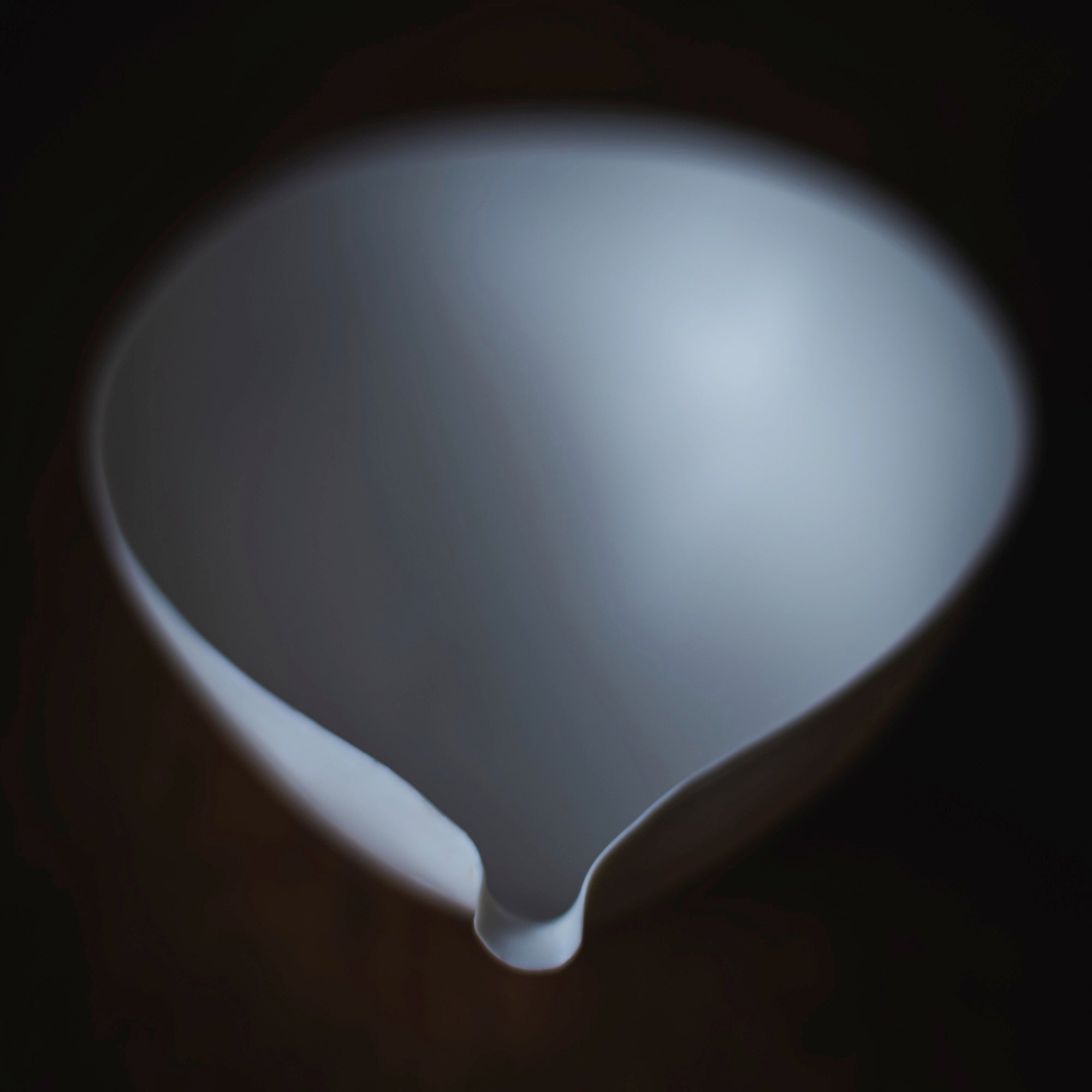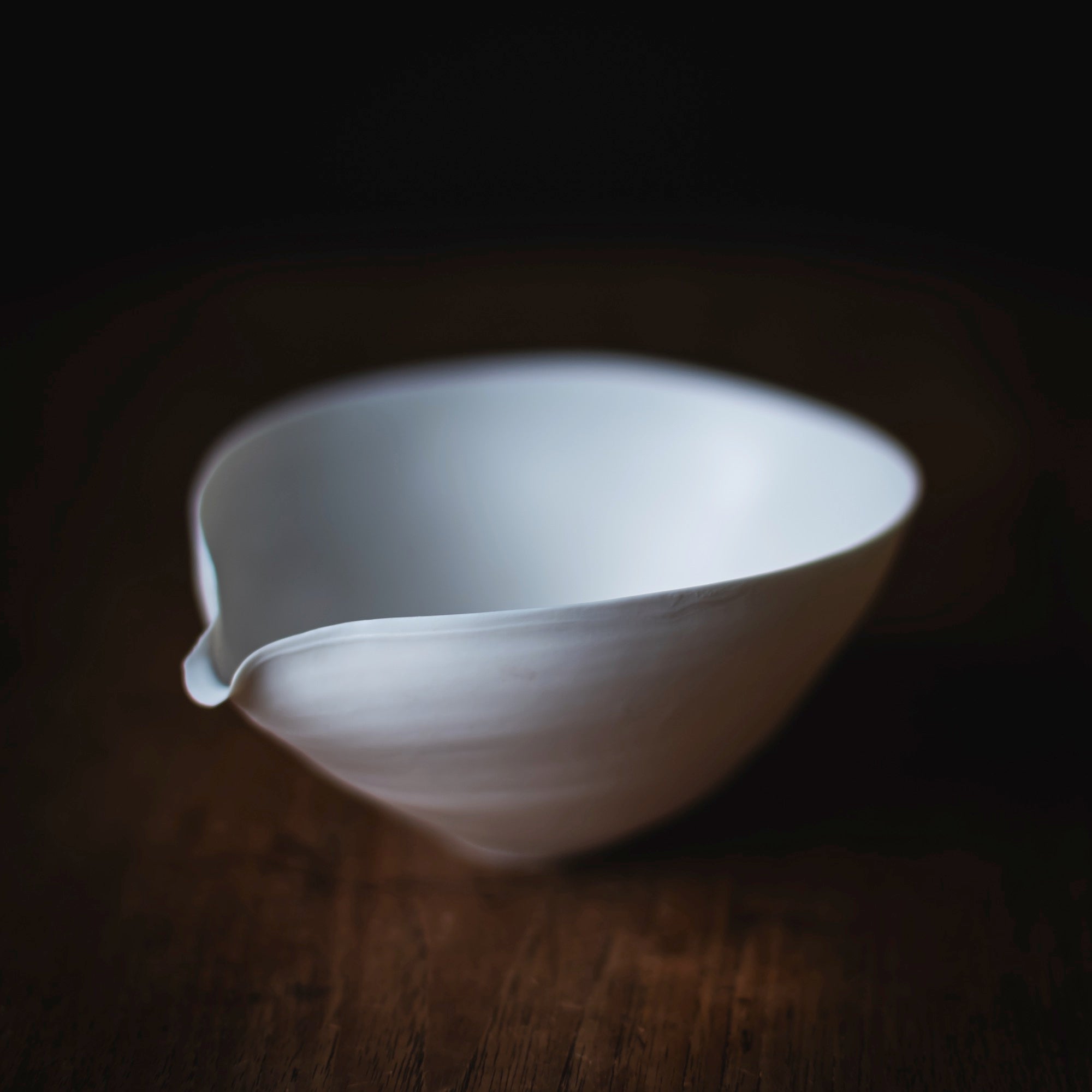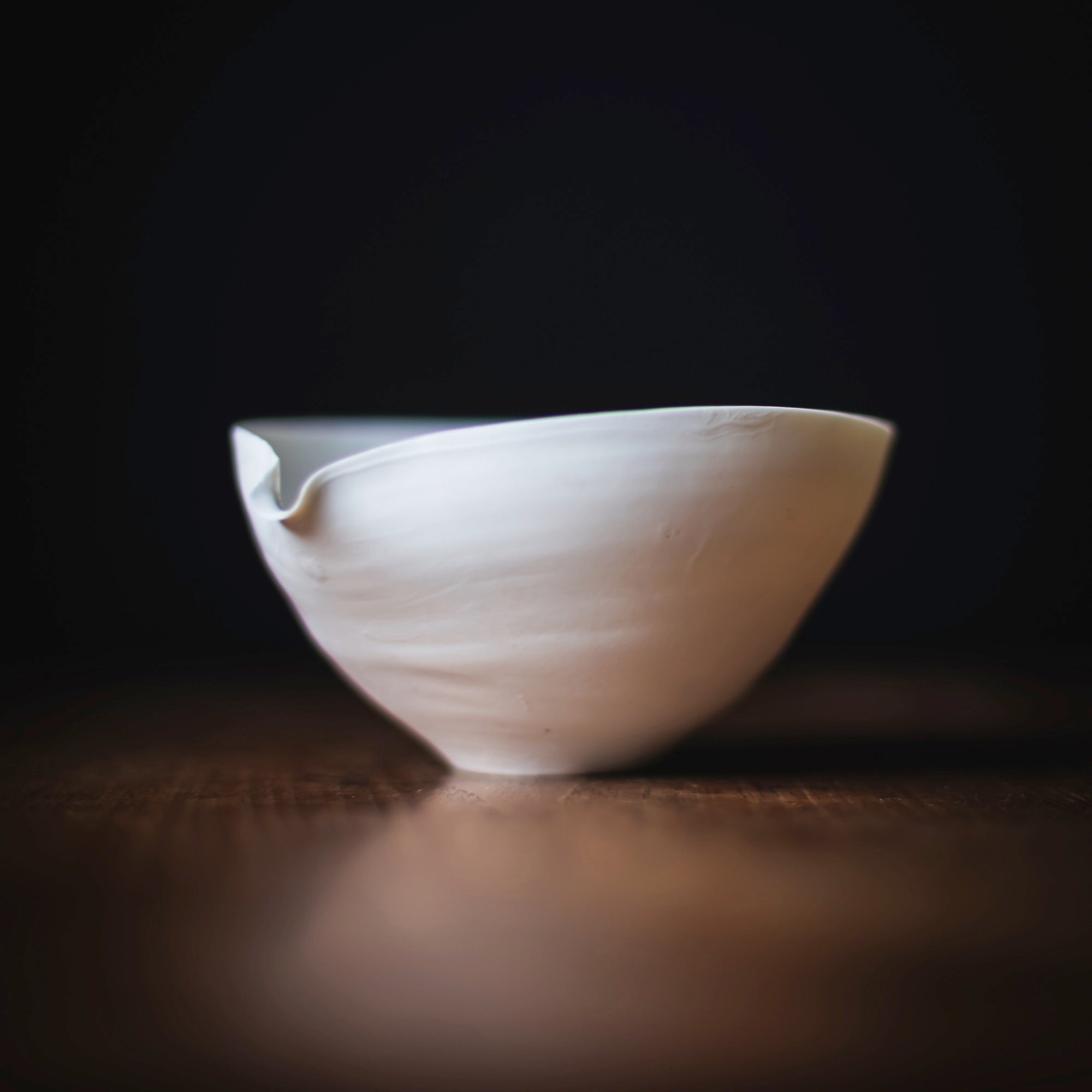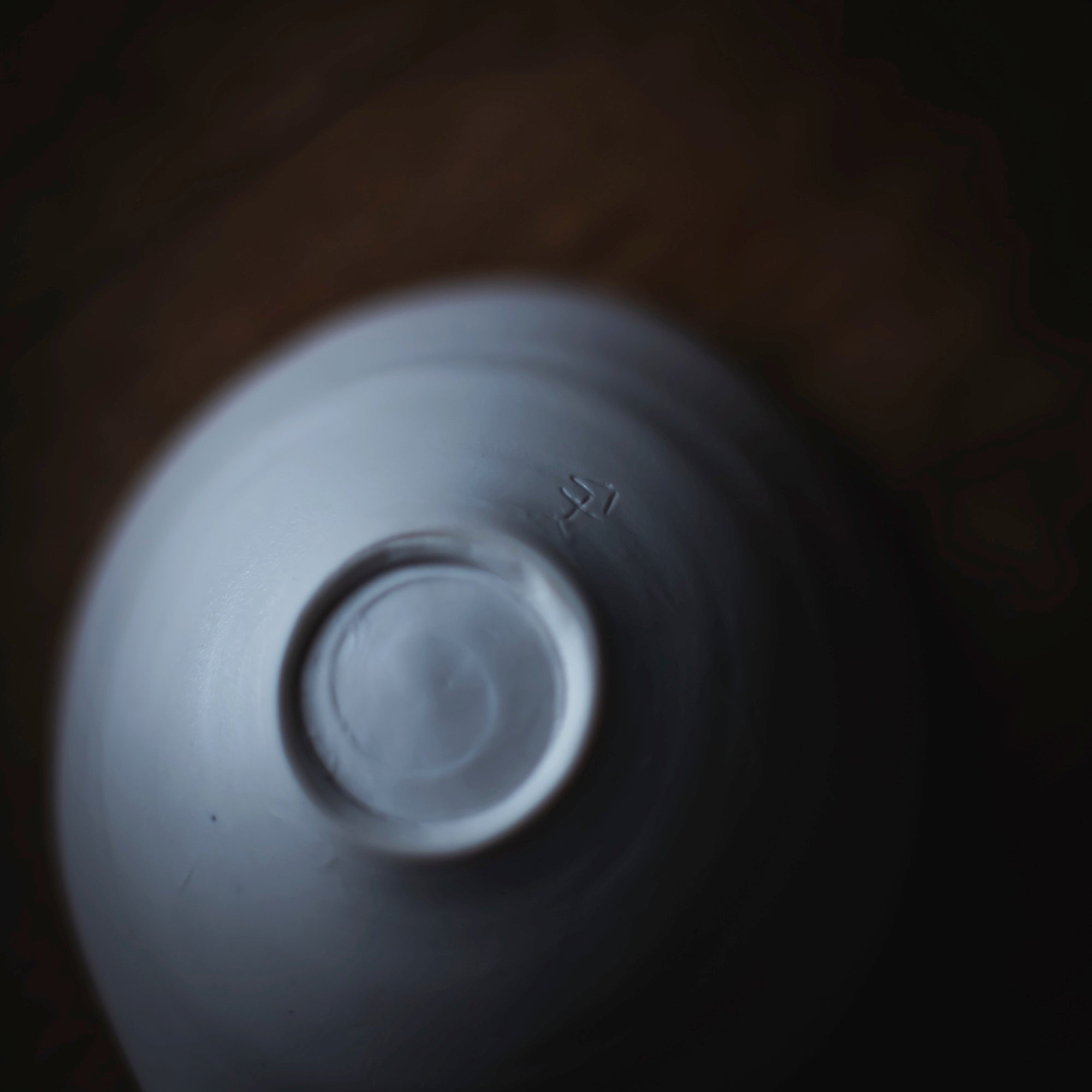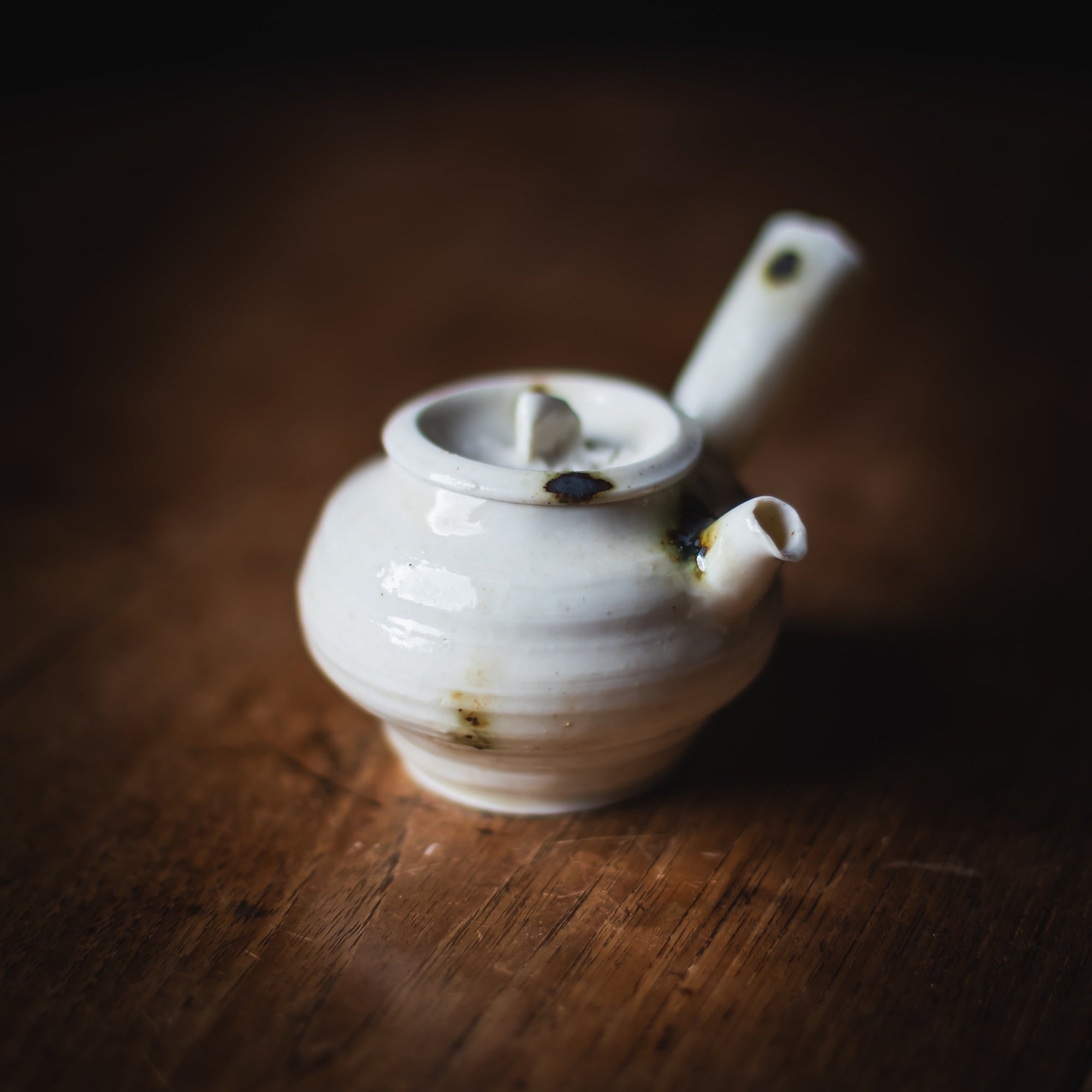
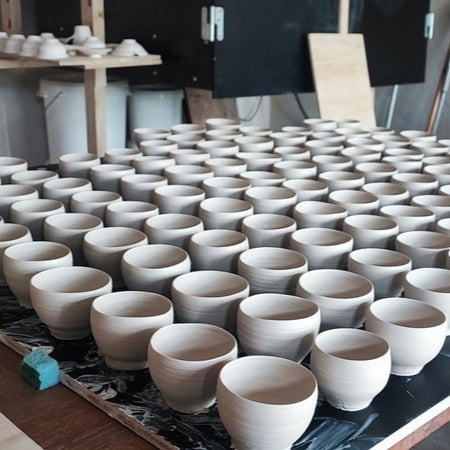
David Louveau
Trained in Japan and rooted in a lifelong pursuit of purity in form, David Louveau’s porcelain reflects a meditative journey back to essence. His work blends rigorous technique with poetic restraint—each piece a quiet study in light, texture, and simplicity
About David Louveau (Skåne, Sweden)
David Louveau’s work embodies a return—both literal and philosophical. After decades exploring rugged stoneware, wood-firing, and anagama kilns, his current direction is quieter and more distilled.
This shift began in 2023, after the loss of his kiln. Rather than rebuild what was, Louveau chose transformation. Drawing on his early training with his sensei and a formative encounter with Hakuji in the early 1990s through Taizo—alongside an apprenticeship in Canada—he turned to Hakuji porcelain: a practice grounded in simplicity, balance, and grace.
The new collection focuses on smooth, matte white forms—refined yet tactile. Through careful forming and controlled firing, he modulates light and shadow across each vessel. The effect is one of deep serenity: pieces that invite pause, quiet, and tea.

In the spirit of David Louveau’s work, simplicity is not seen as emptiness, but as a quiet return to essence—a mindful stripping away, revealing what truly matters.
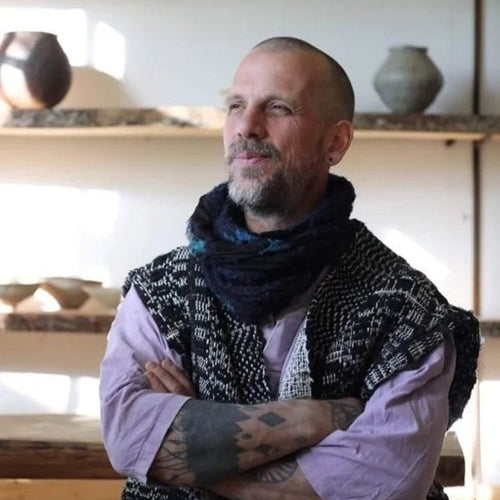
Short Bio
- Born in Guadeloupe, raised in New Caledonia (1971)
- Began ceramics journey in 1994, learning from a Japanese potter
- 2010: Trained under Kinya Ishikawa in Japan
- 2012: Moved to Quebec to continue work alongside Ishikawa
- 2015: Established workshop in La Borne, France
- Since 2016: Focus on ceramics for tea enjoyment
2018–2021: Explored anagama firing, annealing, and layering techniques
2023: Following the loss of his kiln, shifted entirely to minimalist porcelain
David works exclusively with porcelain, embracing both traditional and experimental techniques. The Hakuji method emphasizes restrained glazing and purity of shape. He often removes glazes layer by layer, fires multiple times, and anneals surfaces to achieve the depth and subtlety of his white tones.
The pieces often retain slight irregularities and soft tactile textures—inviting the hand as much as the eye. His process resists perfection, favoring instead a handmade quietude.
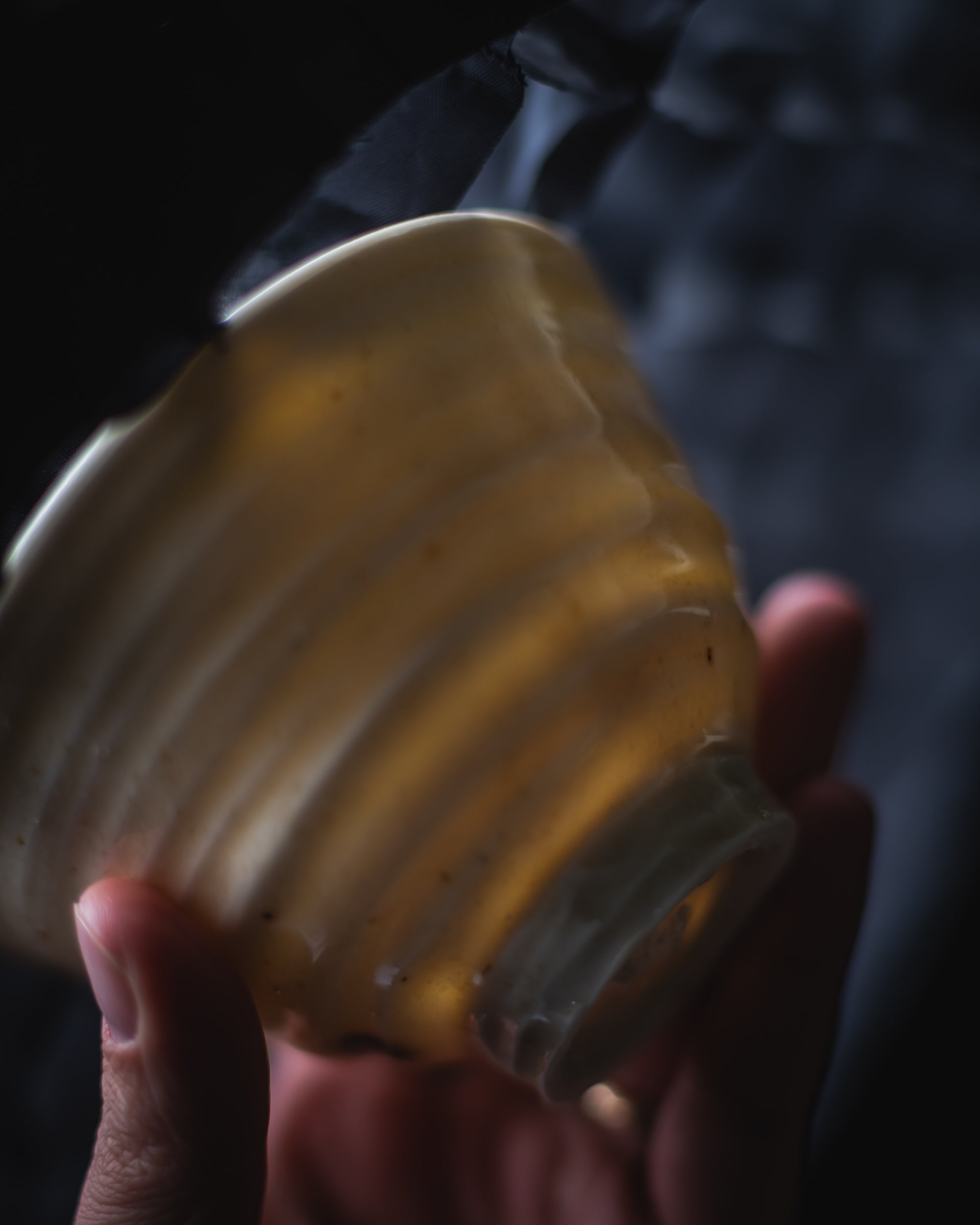
This exclusive release showcases a series of tea and tableware pieces by David Louveau—each carrying the story of return, resilience, and reverence for form.
Ideal for light oolongs, white teas, and any ceremony where the vessel becomes part of the meditative act.
5.0 / 5.0
1 review
































































































